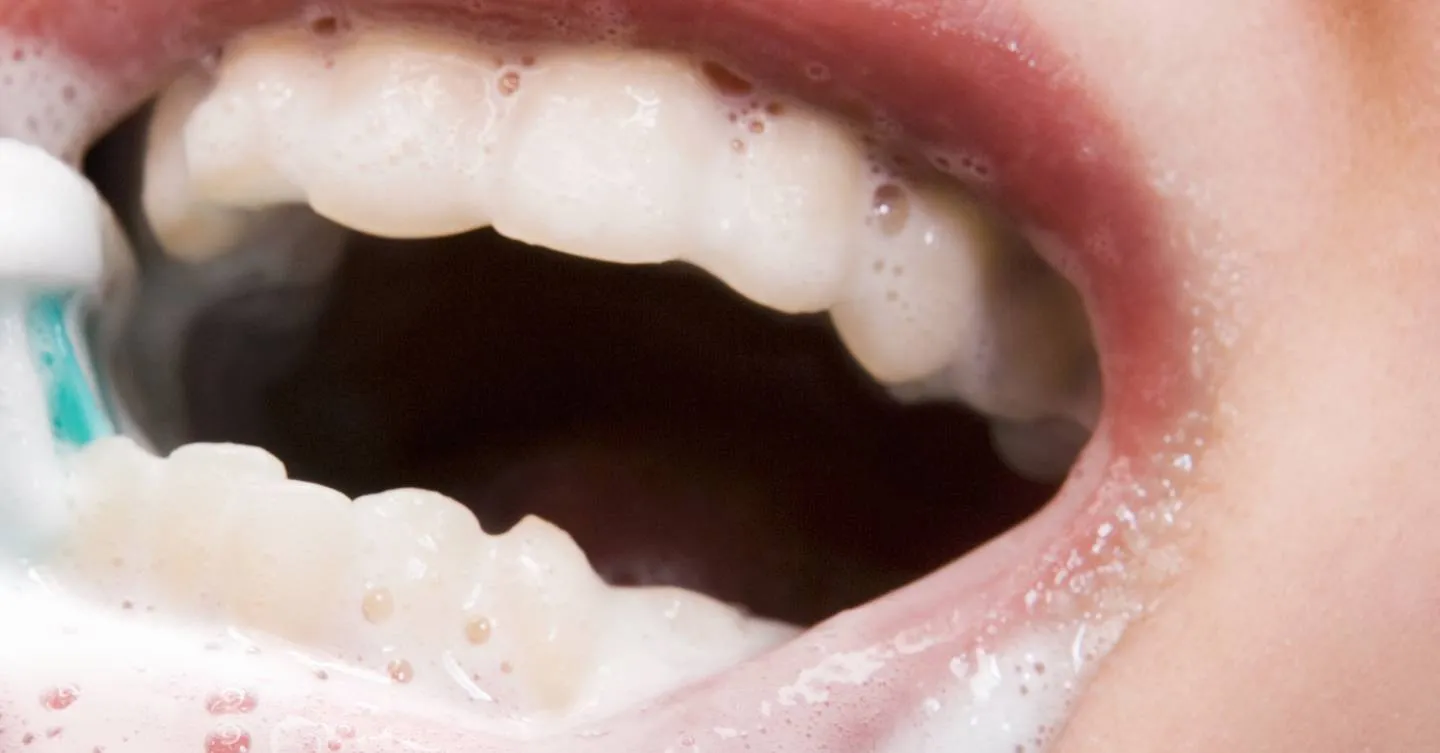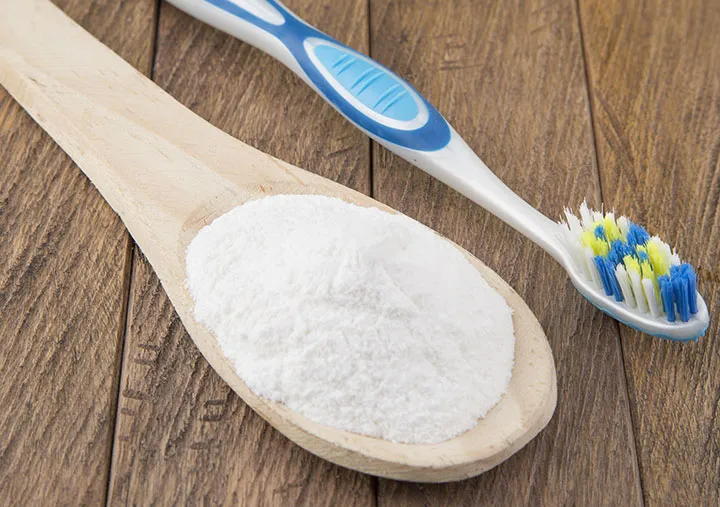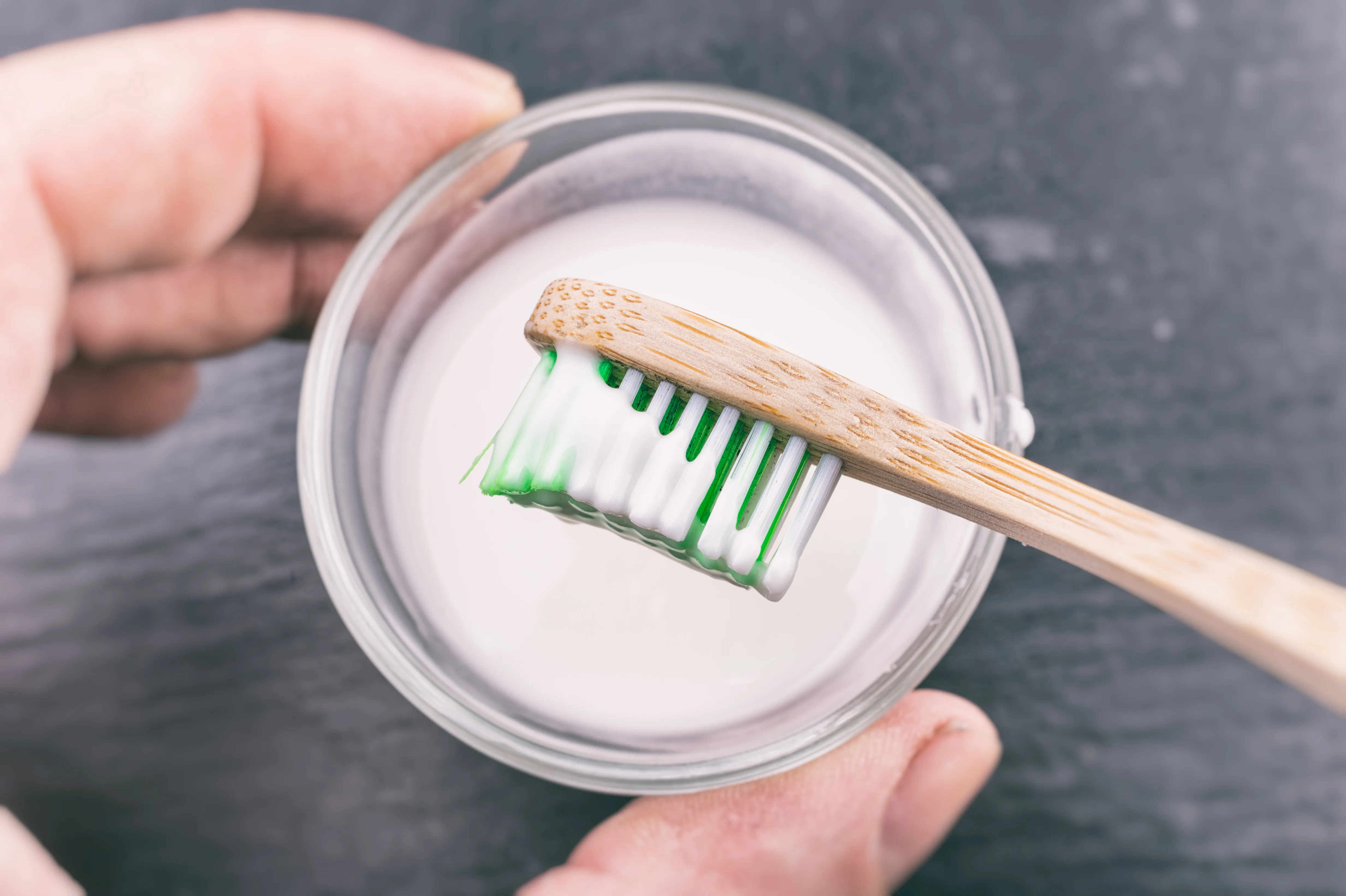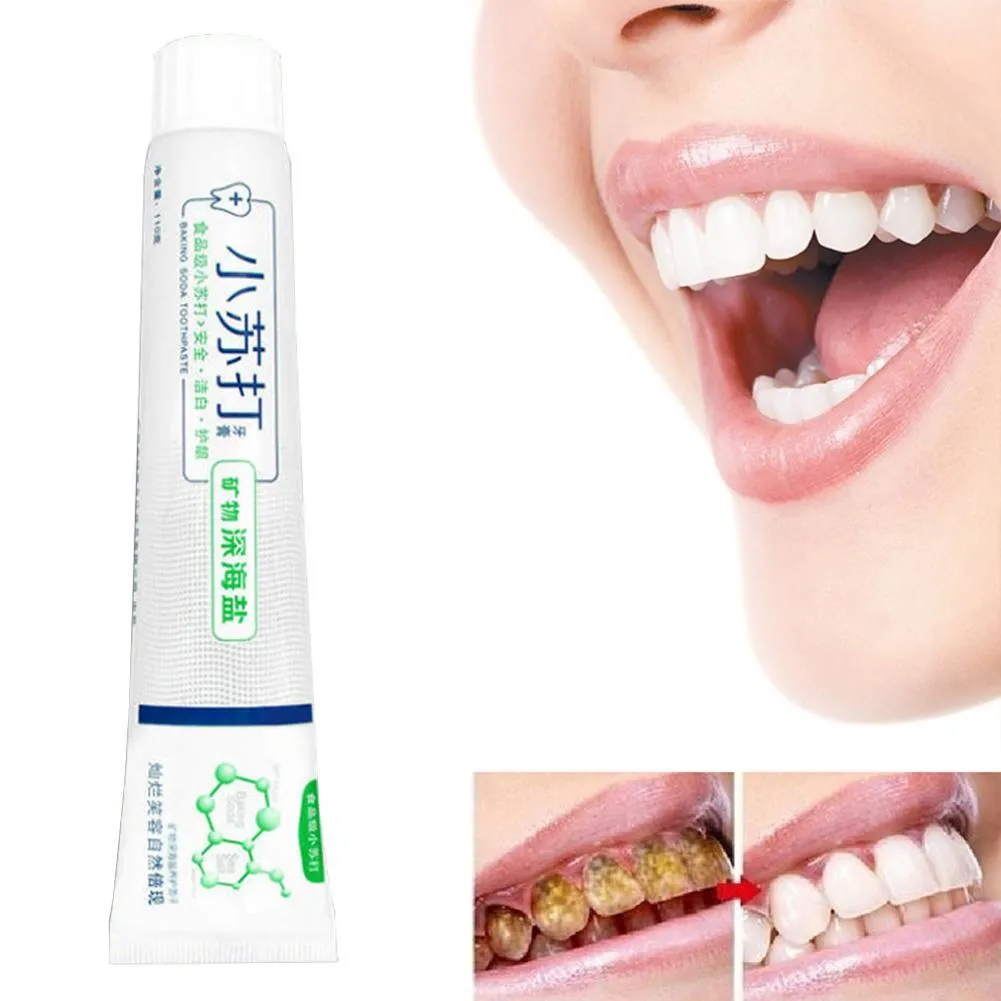What is Baking Soda
Baking soda, also known as sodium bicarbonate, is a versatile chemical compound that has a wide range of uses, from cooking and cleaning to personal care. It’s a white crystalline powder that’s mildly alkaline, which means it can neutralize acids. This property is key to its effectiveness in various applications, including teeth whitening. Baking soda is readily available, inexpensive, and generally considered safe for use when used appropriately. Its abrasive nature can help to remove stains from teeth, while its alkaline properties can help to neutralize acids in the mouth, contributing to a healthier oral environment. Understanding what baking soda is and its properties is the first step in understanding how it can be used for teeth whitening.
How Baking Soda Works for Teeth Whitening
Baking soda works as a teeth whitener through a combination of gentle abrasion and chemical action. The slightly abrasive texture of baking soda helps to scrub away surface stains caused by coffee, tea, wine, and other staining agents. This physical removal of stains is a primary mechanism by which it brightens teeth. Simultaneously, the alkaline nature of baking soda helps to neutralize acids in the mouth. These acids, often produced by bacteria, can contribute to enamel erosion and the appearance of discoloration. By neutralizing these acids, baking soda can help to create a more favorable environment for oral health, indirectly contributing to a whiter smile. This dual action makes baking soda a potentially effective, albeit sometimes controversial, teeth whitening agent.
The Science Behind Baking Soda’s Whitening Effect

The scientific basis for baking soda’s teeth whitening effect lies in its chemical composition and its interaction with tooth enamel and stains. While baking soda doesn’t chemically bleach teeth in the same way that peroxide-based whiteners do, it does mechanically remove stains. The small, abrasive particles of baking soda gently scrape away surface stains. In addition to its abrasive properties, baking soda can also help to break down the organic components of stains. This happens due to its ability to slightly dissolve organic matter. The effectiveness of baking soda, however, is limited to surface stains, and it won’t change the intrinsic color of the teeth. This is why it’s often more effective for removing stains from coffee, tea, and tobacco use rather than addressing deeper discoloration. The science supports its role in stain removal, contributing to a cleaner, brighter smile.
Step-by-Step Guide on How to Use Baking Soda for Teeth Whitening
Using baking soda for teeth whitening is straightforward, but it’s important to follow the correct steps to maximize its effectiveness and minimize potential risks. It’s crucial to adhere to the guidelines to avoid damaging tooth enamel or causing any sensitivity. The process is simple, but consistent and careful application is essential for best results. Before starting, it’s always recommended to consult your dentist, especially if you have any existing dental issues or concerns. This guide breaks down the process into easy-to-follow steps to ensure you can safely and effectively incorporate baking soda into your oral hygiene routine.
Gathering Your Supplies
To begin, you’ll need a few essential supplies. First and foremost, you’ll need baking soda itself; make sure you have a fresh box. Next, you’ll need a toothbrush. A soft-bristled toothbrush is recommended to minimize the risk of abrasion and enamel damage. Also, you might want to have a small bowl or container for mixing. Finally, you’ll need water; preferably, room temperature water to mix with the baking soda. Ensure all the supplies are clean and ready before you begin. Gathering these simple supplies ensures you are well-prepared to start the teeth whitening process.
Mixing Baking Soda with Other Ingredients

Mix a small amount of baking soda with water to create a paste. The general ratio is about one teaspoon of baking soda to enough water to form a paste that is not too runny and not too thick. You can also add a few drops of other ingredients for enhanced effects. Some people add a tiny amount of hydrogen peroxide. Be extremely cautious when using this, and ensure you use a very low concentration, and never swallow any solution. Mix the ingredients thoroughly until you achieve a consistent, smooth paste. Avoid adding too much water, as this will make the paste less effective. A good consistency makes it easier to apply and keeps it from dripping during brushing. Ensure the paste is uniform for even application.
Application Technique
Dip your toothbrush into the baking soda paste, ensuring all bristles are coated. Gently brush your teeth, focusing on each tooth. Use small, circular motions, and apply light pressure. Avoid brushing too vigorously, as this can damage your enamel. Ensure you reach all surfaces of your teeth, including the front, back, and chewing surfaces. Be careful not to scrub too hard, especially near the gumline. The goal is to remove stains, not to aggressively scrub your teeth. A gentle, consistent brushing technique is key to effective stain removal and minimizes the risk of any enamel damage.
Brushing Time and Frequency
Brush your teeth with the baking soda paste for about two minutes. It is essential not to over-brush, as this can lead to enamel erosion. After brushing with baking soda, it is crucial to rinse your mouth thoroughly with water to remove any remaining paste. You can follow this with your regular toothpaste and brush your teeth again to freshen your breath and enhance the cleaning. For best results and to avoid damage, use this method no more than once or twice a week. Overuse can lead to sensitivity and harm to the enamel. Adhering to the recommended frequency and duration is crucial for safe and effective teeth whitening with baking soda.
Rinsing and Aftercare

After brushing, rinse your mouth thoroughly with water to remove any remaining baking soda paste. You can also rinse with a mouthwash. Be sure to spit out the paste and water completely. Inspect your teeth in a mirror to see if you have achieved the desired results. If you experience any sensitivity, discontinue the use of baking soda and consult your dentist. Regular dental checkups and proper oral hygiene practices are still essential even when using baking soda for whitening. By following these aftercare steps, you will ensure that your teeth stay healthy and bright.
Benefits of Baking Soda for Teeth Whitening
Baking soda offers several benefits for teeth whitening. It is a readily available and inexpensive option, making it accessible to many people. Its natural properties mean it is free from harsh chemicals, offering a gentler alternative to some commercial whiteners. Baking soda can effectively remove surface stains caused by common culprits like coffee, tea, and tobacco, leading to a brighter smile. Consistent use can lead to a noticeable improvement in tooth color. For some, it is an effective and budget-friendly option for maintaining a white smile, without the cost and complexity of professional treatments or the risks associated with some chemical alternatives.
Cost-Effective Solution
One of the biggest advantages of using baking soda for teeth whitening is its cost-effectiveness. A box of baking soda is very inexpensive, making it an incredibly affordable alternative to expensive whitening products or professional treatments. Unlike whitening strips, gels, or in-office procedures, which can be costly, baking soda provides a budget-friendly way to maintain a brighter smile. For those looking to improve their oral hygiene on a budget, baking soda offers a practical solution that is accessible to almost everyone. The cost savings make it an attractive option for those seeking a more affordable way to whiten their teeth.
Natural and Chemical-Free Alternative

Baking soda provides a natural and chemical-free alternative for teeth whitening. Unlike some commercial whitening products that contain harsh chemicals like peroxides, baking soda is a simple compound. It is free from artificial additives. This makes it a gentler option for those who are sensitive to chemicals or prefer natural solutions for their oral care. For individuals looking to avoid exposure to strong chemicals, baking soda is a suitable choice. Its natural composition can be appealing to anyone seeking a more holistic approach to dental hygiene, providing a way to whiten teeth without introducing potentially harmful substances into their routine.
Drawbacks and Risks
While baking soda can be effective for teeth whitening, it also has potential drawbacks and risks that users should be aware of. Overuse can lead to enamel erosion, which can make your teeth more sensitive to temperature changes and increase the risk of cavities. Some individuals may experience sensitivity or discomfort, particularly if they have sensitive teeth or gums. It is essential to use baking soda in moderation and be mindful of any adverse reactions. Always consult a dentist if you have any concerns about using baking soda or experience any negative side effects. Being aware of the risks helps ensure that you are using baking soda safely and effectively.
Potential for Enamel Erosion
One of the primary concerns with using baking soda for teeth whitening is the potential for enamel erosion. Baking soda has a slightly abrasive texture, and excessive brushing or using it too frequently can wear down the enamel. Enamel is the hard, protective outer layer of your teeth, and once it is damaged, it cannot be replaced. Enamel erosion can lead to increased tooth sensitivity, an increased risk of cavities, and a yellowing appearance as the underlying dentin becomes more visible. To minimize this risk, use baking soda sparingly, use a soft-bristled toothbrush, and avoid brushing too aggressively. Regular dental checkups are also crucial to monitor the health of your enamel. Proper usage is important to maintain your enamel.
Sensitivity and Discomfort

Some users may experience sensitivity or discomfort when using baking soda for teeth whitening. This is particularly true for individuals with already sensitive teeth or gums. The abrasive nature of baking soda can irritate the gums and cause sensitivity to hot or cold foods and drinks. If you experience sensitivity, it is important to reduce the frequency of use or stop using baking soda altogether. You might also want to consider using a toothpaste specifically designed for sensitive teeth. If sensitivity persists or worsens, consult your dentist. Understanding your teeth’s sensitivity and adjusting your oral care routine accordingly can help you manage any discomfort associated with using baking soda.
Alternatives to Baking Soda for Teeth Whitening
If you’re looking for alternatives to baking soda for teeth whitening, several other options are available. Whitening toothpaste contains mild abrasives and chemicals that help remove stains, and are often gentler on enamel than baking soda. Whitening strips are another popular choice, containing a peroxide-based bleaching agent that whitens teeth. Professional teeth whitening by a dentist offers the most significant and effective results, using stronger bleaching agents under controlled conditions. The best alternative depends on your specific needs and preferences, as well as any underlying dental conditions. It’s always recommended to consult your dentist to determine the most appropriate teeth-whitening method for you.
In conclusion, baking soda can be a helpful tool in teeth whitening when used correctly. Its ability to remove surface stains, affordability, and natural properties make it a popular choice for many. However, it is important to use it with caution and be aware of the potential risks, such as enamel erosion and sensitivity. Moderation and proper technique are key to safe and effective use. Consider the alternatives if you have concerns or want more powerful results. By understanding the benefits and drawbacks, you can make an informed decision about whether baking soda is right for your oral hygiene routine. Always prioritize your oral health and consult with a dental professional for personalized advice.
